How to Rehydrate Wood Floors?
We will tell you how to keep your wooden floors good-looking longer
Having wooden floors is posh and it is a sign of your wealth mostly since wood is quite an expensive material. however, owners of wooden floors often face the same issue of keeping their flooring at the proper level of humidity.
See, if you have dry wood floors, they will not look the same attractive and smooth as they do when being properly hydrated.
In addition, dry wood will start getting damaged much sooner which means more repairs and thus more money spent on that.
This is the major reason why keeping the moisture of your hardwood floors at a decent level is mandatory if you want your floors to serve you longer.
In this article, we are going to tell you in detail what you shall do in order to keep your wooden floors properly hydrated. You will also learn how to define that your wooden floors lack moisture, and what it can result in.
Finally, you are going to learn what might happen if your wood floors get way too much moisture.
Related: How to Use Mineral Spirits On Wood?
What to Do to Rehydrate Wood Floors?
Humidity and wood floors are two things that should always come together.
Hardwood floors, as you probably know, usually have various maintenance challenges and nuances. And one of the crucial factors among these is the amount of moisture in the wood material or lack of it.
Too much moisture, as well as too little, is not good because you will definitely have problems.
You might be wondering about what level of wood floor humidity is considered to be proper and enough. According to wood flooring experts, moisture levels of between 6-9 percent make wooden floors maintain optimal performance.
However, if your hardwood floor is too dry, you can easily rehydrate it to reach the recommended moisture levels. Another good piece of news is that you will not need any complicated procedures or expensive tools for that.
Just using vinegar solution, a humidifier, water-based polyurethane, or oil-based urethane is usually enough to bring your wooden floors back to life.
Nevertheless, below you can read a more detailed guide on how to rehydrate your hardwood floors correctly if you notice that the flooring material starts looking bad, cracking, or displaying other signs of damage and dryness.
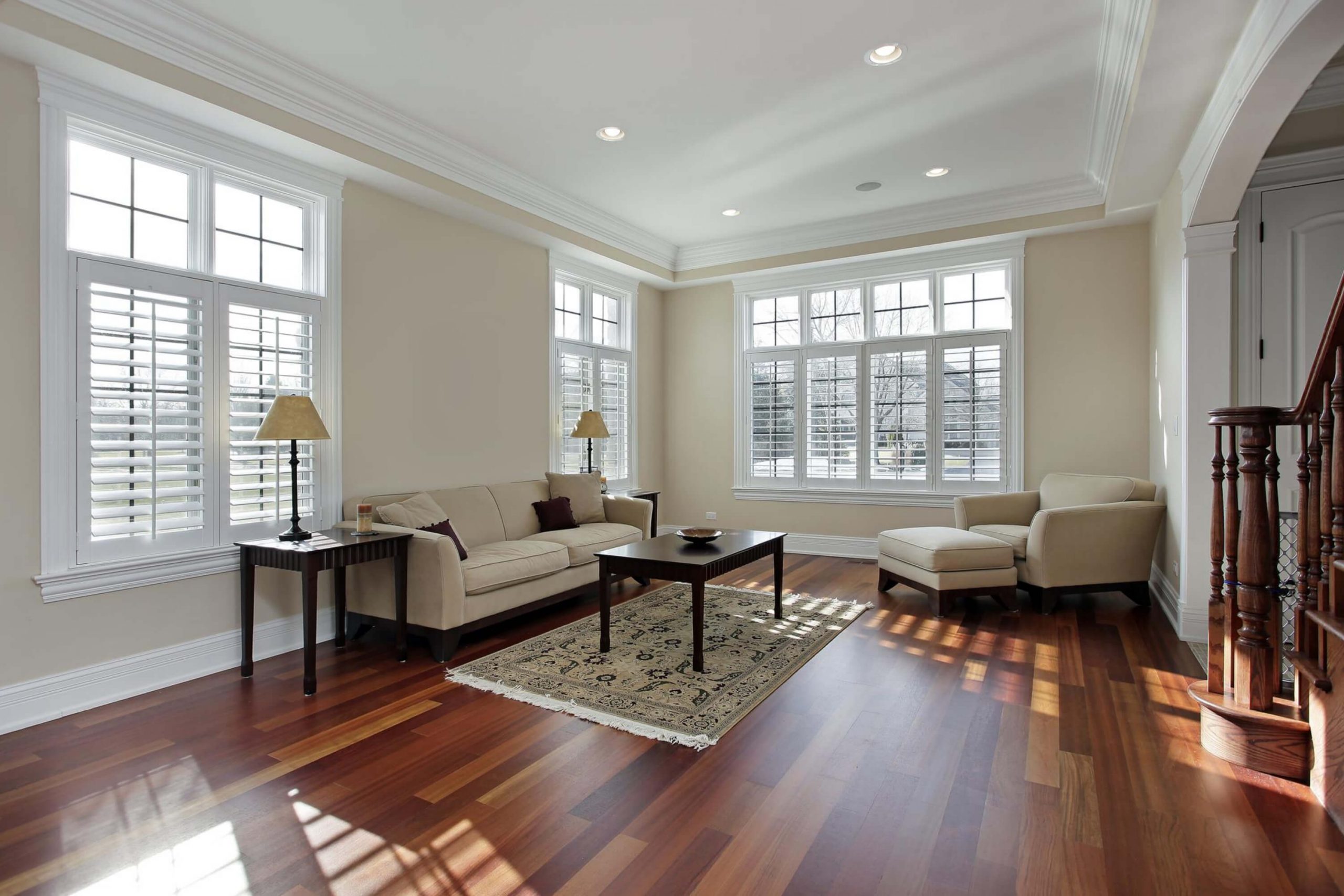
lmphot via crello
Table of Contents
Clean the Floor with a Vinegar Solution
To moisture hardwood floors when the wood floor dehydration is still at the earlier stages with just a few cracks and gaps, you can easily rehydrate it by cleaning the floor surface with a mild vinegar solution. But first of all, you need to get the room ready:
- take out all the furniture from the room
- then, with the help of a broom, clean off all the dirt and debris from the hardwood floor surface
- after you sweep the floor, in a mop bucket, mix white vinegar with water in a ratio of 1:10
- dip a wet mop inside the solution and wring it thoroughly before mopping the wood floor
- the moisture from the vinegar solution will seep through the cracks and gaps caused by dryness, triggering the rehydration process
When using this approach, keep in mind that proper wringing of the mop is important.
See, you don’t want to end up with the opposite problem of excess moisture which will happen if you mop the wooden floor with an excessively wet mop.
After you finish mopping the floors, wipe up the wood flooring surface with a dry piece of cloth.
It will help you to remove the vinegar residue and absorb the water that might be left on the floor surface.
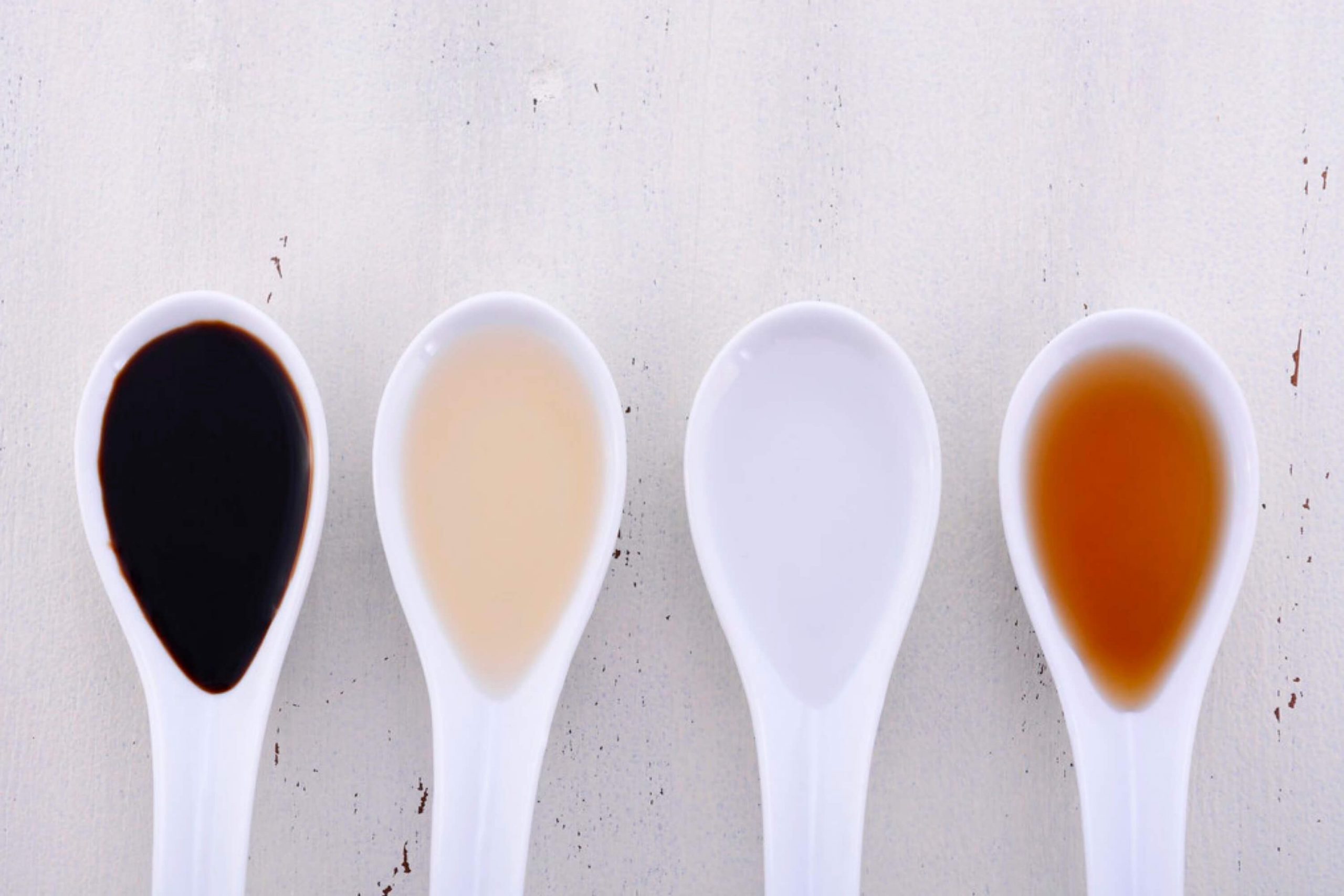
amarosy via crello
Related: How Thick Should a Garage Floor Be?
Install a Humidifier
To humidity for hardwood floors, you can opt for the simplest method available. Simply make use of a humidifier!
As we have told you before, the ideal humidity conditions for hardwood flooring are from 30 to 50%. This is why, if you need to raise the humidity level in the room where wooden floors are damaged due to excessive dryness, install a humidifier.
This tool works to increase the relative humidity of the environment by adding extra moisture to the environment. Another good feature of it is that you don’t have to do anything like mopping, etc., in order to moisturize your wooden floors.
You just fill the tool with some water, plug it in, turn the humidifier on – and it does all the job itself!
There are different types of humidifiers. However, since your goal is to increase air moisture levels, we recommend you opt for an evaporative humidifier, a steam humidifier, or an ultrasonic humidifier.
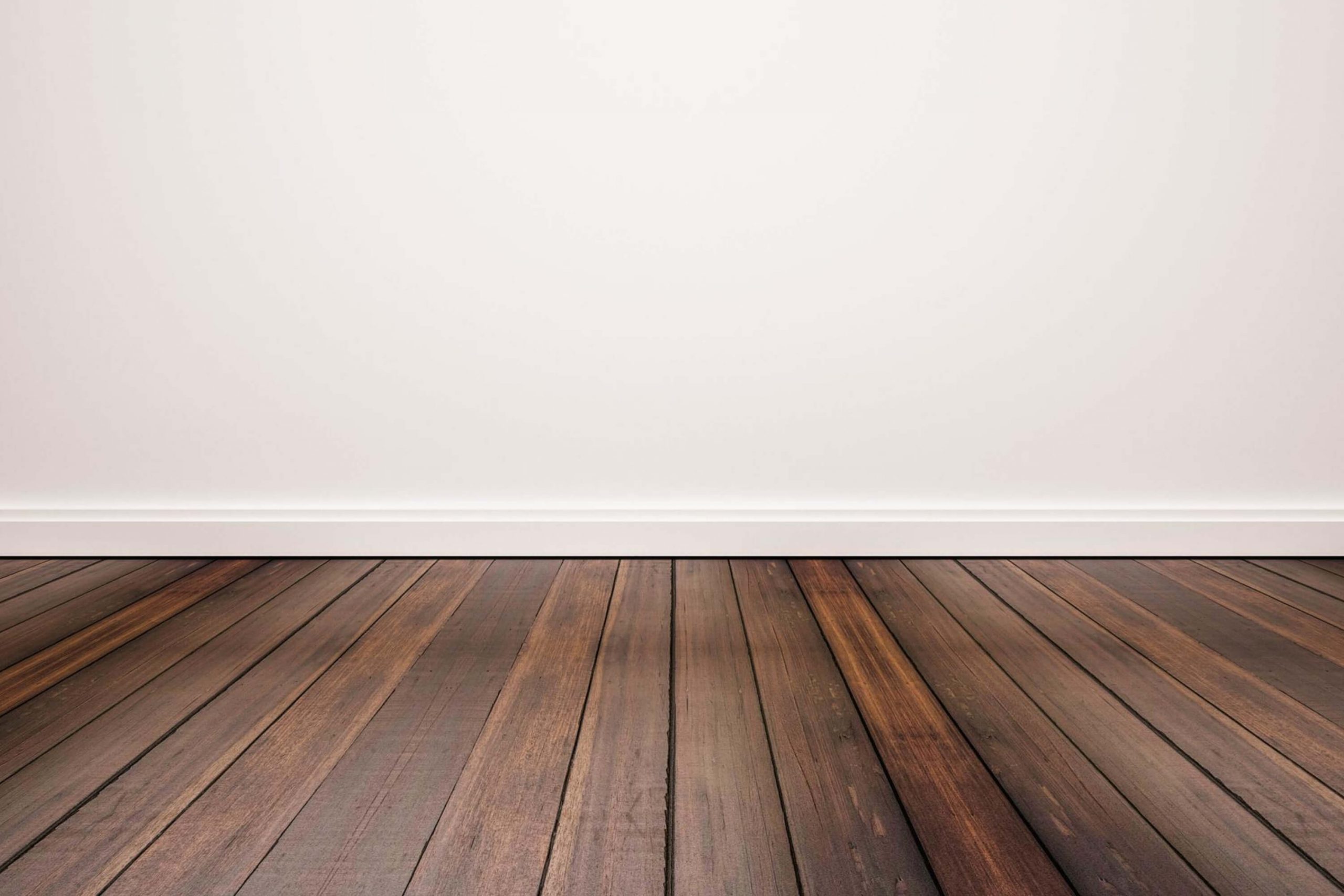
SasinP. via crello
Related: How to Get Paint Off Laminate Flooring?
Use Water-Based Polyurethane
Water-based polyurethane is another solution that will also rehydrate your dry hardwood floor surface effectively, as well as restore it to its original glossy sheen. In addition, water-based poly finishes not only provide a glowing finish but also bring down the moisture loss from the wood material into the air.
In addition, they are also much easier to apply in comparison to oil-based urethane finishes. Besides, you can make use of this method alongside vinegar cleaning if you want to get an even smoother surface finish.

Use Oil-Based Urethane
Just like water-based polyurethane, oil-modified urethane will also cope with the task of sealing the wood surface in order to prevent further moisture loss. It will also restore the original and shiny appearance of your wood flooring.
However, if you want to apply oil-based finishes correctly and properly, you will have to spend a bit more effort since, in comparison to water-based polyurethane products, the oil-based alternative needs more elbow grease.
Also, when using urethane finishes, no matter whether they are water or oil-based, keep in mind that it is mandatory to sand the old finish off first before applying the new one. Like this, you will get much better results.

igorr1 via crello
Related: How to Get Paint Off Of the Vinyl Floor?
Boil a Pot of Water
If you don’t have a humidifier, and buying one is not an option for you right now (even though they are not costly), using a pot of boiled water can be a good alternative. Of course, a humidifier is way more efficient.
Nevertheless, boiling water in a pot is also a simple, homemade solution that works great for rehydrating hardwood floors.
- simply pour a gallon or two of water into a sizeable pot
- place it atop one of your stove burners
- turn on the burner
The process is very simple. As the water boils because of the heat that is produced by your stove’s burner, steam/water vapor is released into the air. As a result, the level of relative humidity of the room is getting higher and higher.
The wood flooring material then soaks up the excess moisture from the air, revitalizing it in the process.
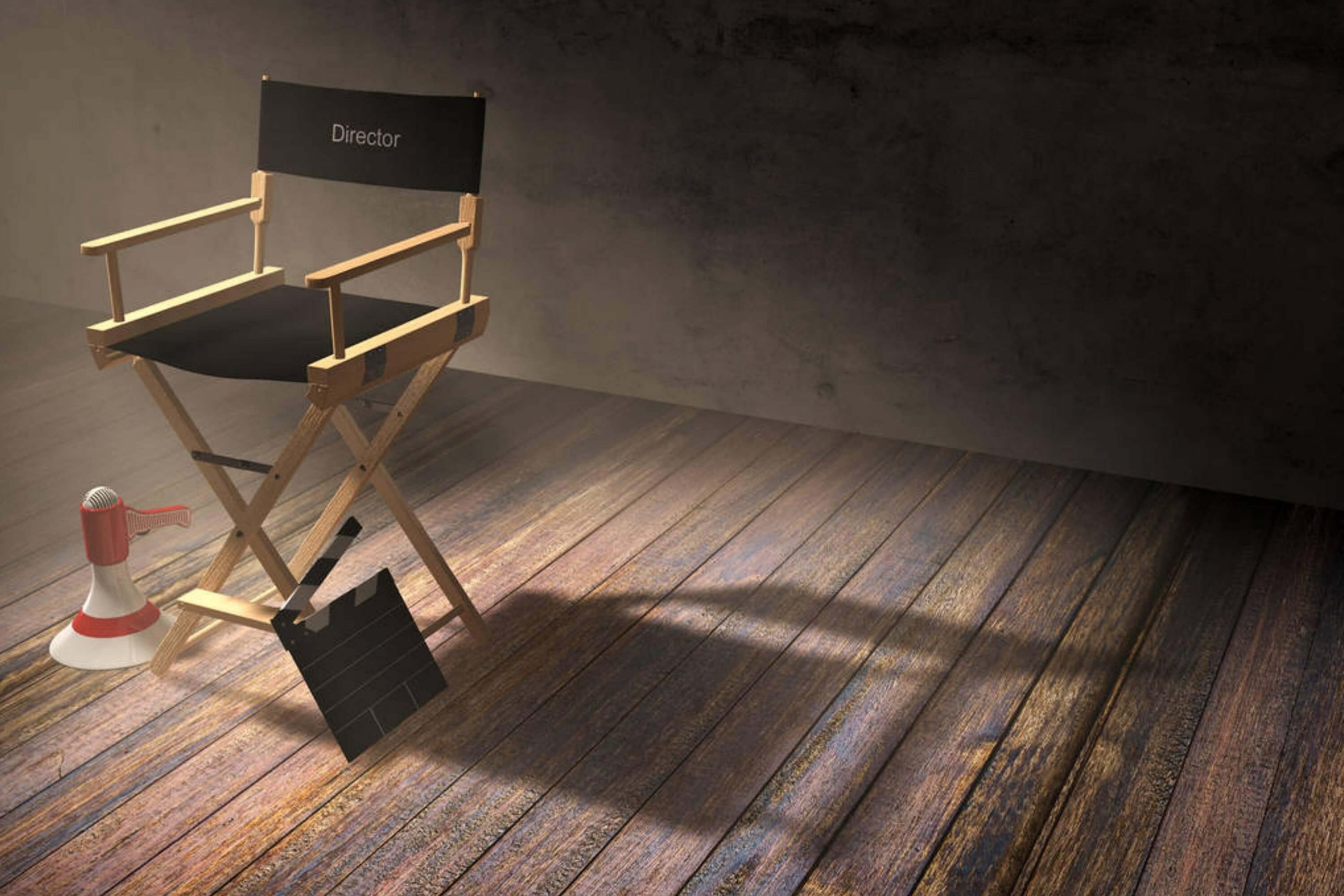
via crello
Related: How to Get Spray Paint Off Linoleum Floor?
Install Window Treatments
How could window treatment help with rehydrating the wooden floors, you may be wondering? See, in the majority of cases, wooden flooring becomes way too dry if it is exposed to direct sunlight.
The heat from the sun will dry out the wood material much faster than your heating will do. As such, it is vitally important to filter out the sunrays! This can be done by installing window treatments.
With less sunlight heat drying out the hardwood, it will retain more moisture and regain its shiny appearance.
Like this, now you have plenty of alternative options of how you could rehydrate your wooden floors if you notice that the flooring material starts getting way too dry, cracked, and splintered.
And since each of these methods is very affordable, as well as super easy to use, and some of them can even be combined to use in tandem, you can always opt for any of these methods to revitalize your hardwood flooring with minimal effort and maximum effect.
What Dry Wooden Floors Can Result In?
This is the most frequently asked question that comes from those who have wooden floors in their homes. What so bad could happen if my wooden floor gets too dry? Let’s try to figure this out.
See, during winter, most of you will usually heat up your houses more often than you do in spring or fall. It will lead to low humidity conditions.
As a result, moisture is lost from hardwood flooring and the floor dries up and becomes predisposed to all sorts of contractions. If you don’t do anything to fix that, this can later lead to a number of problems.
This is why it is essential that you can tell that your wooden floor is too dry. Luckily, this is quite easy to find out if you notice any of the following issues:
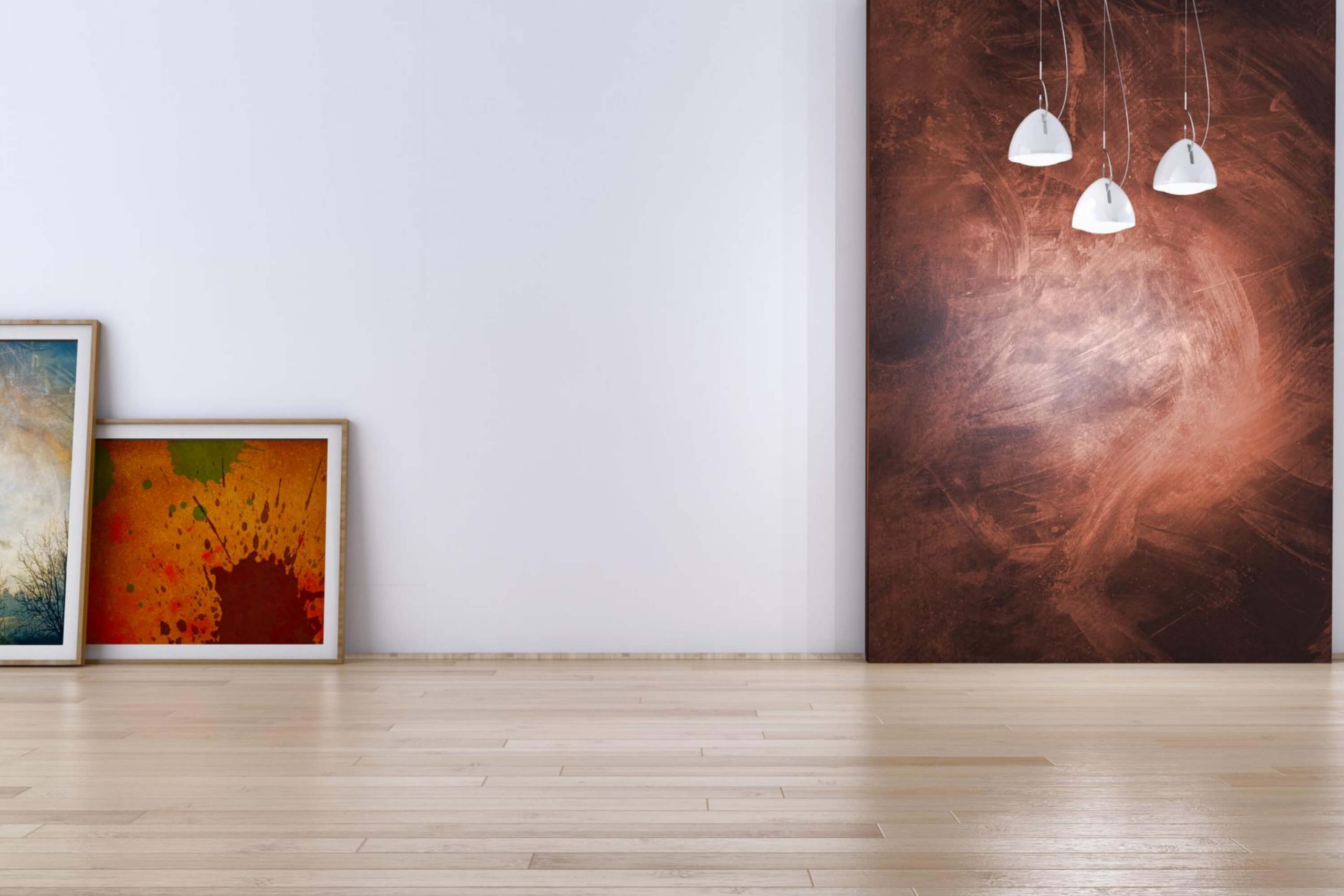
Prithan via crello
Your Hardwood Floor Is Splintering
If you have very low humidity levels in your home, it will lead to extreme wood floor dryness. This dryness, as you can guess, will significantly stress out your hardwood floor.
This typically results in the wood flooring becoming weaker and more brittle.
The final result that you get could be splintering, splitting, or cracking along the grain of the wood. Unfortunately, this kind of damage is permanent and it can’t be fixed by any external products or remedies.
The only thing that can be done is that the affected planks of your wooden floor have to be replaced in order to restore the original look of the floor.
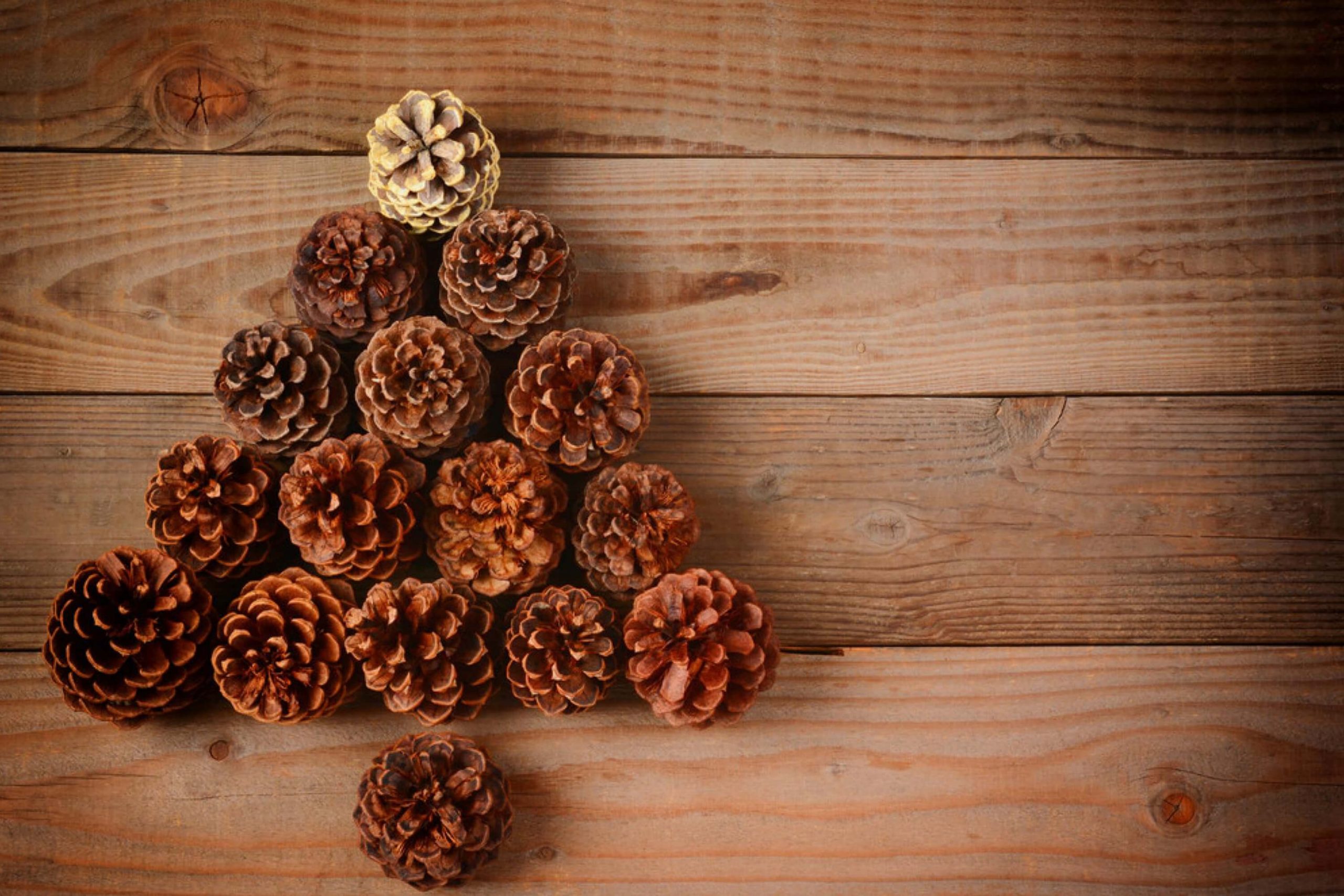
scukrov via crello
Gapping
When the humidity in your home is lower than 30% and the temperature is higher than 80 degrees Fahrenheit, the wood planks of your floor will become way too dry. As a result, the planks will shrink, which will lead to gaps starting to appear between adjoining planks.
These gaps are usually quite slender, but many homeowners still end to consider them to be unsightly. If you notice gaps on your hardwood floor, it means that the floor is too dry and needs proper rehydration!
According to the National Wood Floor Association (NWFA), you should keep the relative humidity of your rooms between 30-50% in order to maintain the optimal performance of your wooden flooring. At the same time, average temperature levels should be between 60 to 80degrees Fahrenheit.
Like this, you will be able to tell for sure when your wooden floor is excessively dry and needs proper hydration. Since let’s be honest, splinters and gaps don’t make any wooden surface look attractive and nice.

How Excessive Moisture Affects Your Wooden Floors?
Since the lack of moisture may result in such unpleasant issues as gaps, splinters, and cracks in your wooden floor, you need to make sure that your flooring is always properly moisturized. However, it is essential to not moisturize it too much as well!
Just like low moisture levels, too much moisture is not going to do your wood floors any good.
That’s why you should always keep in mind a simple rule of thumb: never make an attempt to hydrate your hardwood surface (no matter whether it is a floor or something else) by pouring or pulverizing water directly on it!
If your wooden floor or other surface is excessively moisturized, it will not only cause structural damage to the material. It will also encourage and speed up mold growth.
As you know, mold fungi live and spread in moist conditions. And a bad thing about them is that they can be a cause of a variety of respiratory illnesses.
In addition, mold spores are known for having an unbearable, musty smell. You definitely don’t want your living space having that odor!
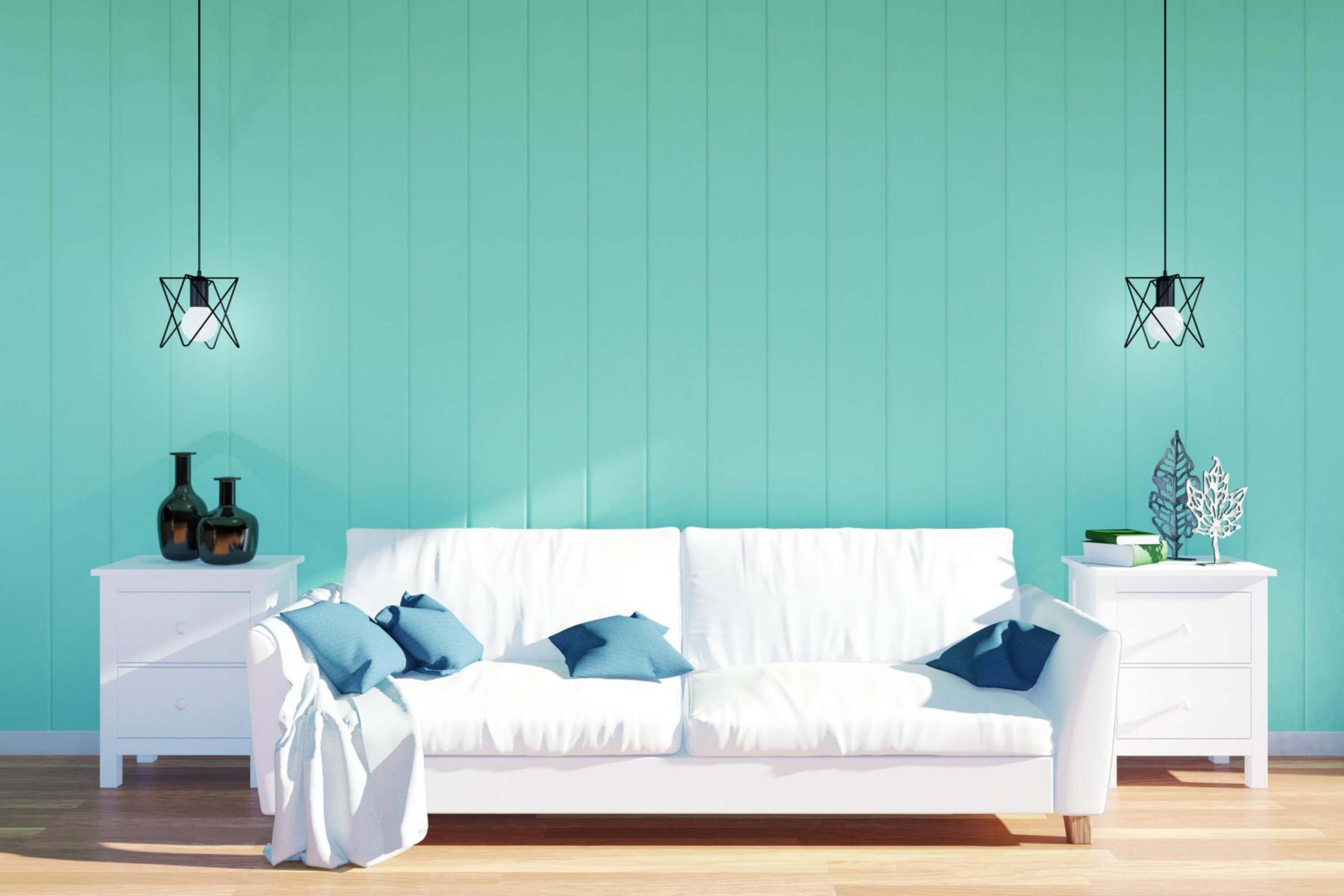
via crello
Two most common signs of excessive floor moisture
The two most common signs of excessive moisture damage on wooden floors are warping and buckling. This is why, if you have discovered that your hardwood floor is overly hydrated, there are various methods that can be used in order to cope with the problem.
For example, if the source of this moisture problem is high humidity levels, try to solve it by installing a dehumidifier.
This tool is like a humidifier, except for the fact that it works vice versa and removes excess water vapor from the air (instead of providing it).
However, there might be another cause for the moisture issue. It can happen that a subfloor is too wet. Or your plumbing pipes are leaking and this water is passing through the subfloor. In either case, you will have to uninstall the wood planks.
Afterward, fix the plumbing leaks in the subfloor, or dry it out using dehumidifiers and install underlayment before reinstalling the wood flooring planks.
So, now you know how your wooden floors should be rehydrated in case you notice that the surface is way too dry, or if you have already spotted minor cracks or splinters.
The sooner you revive your wooden planks, the faster your floor will get back its shiny appearance and smooth surface!
Ever wished paint sampling was as easy as sticking a sticker? Guess what? Now it is! Discover Samplize's unique Peel & Stick samples. Get started now and say goodbye to the old messy way!
Get paint samples




Frequently Asked Questions
⭐Is it ok if I add essential oils to the water in my air humidifier when hydrating wood floors?
Well, essential oils won’t cause any harm to your wooden floor. They will just work as air deodorizers.
⭐Is it safe to hydrate wooden floors if they are very old?
To deal with old wooden floors, you should call a professional. If you try to hydrate them yourself, chances are that you damage the surface.
⭐Is it enough to mop my wooden floor with wet mop to hydrate it?
If the floor is very dry, simple mopping might not be enough. But if the floor is basically in a good condition, regular mopping can help keep it in a good state.
13 thoughts on “How to Rehydrate Wood Floors?”
Leave a Reply

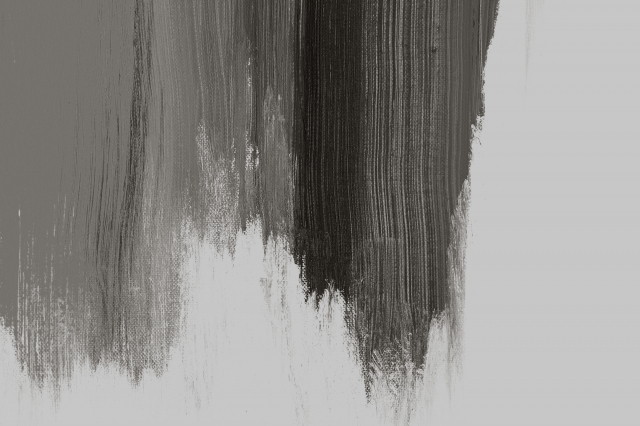
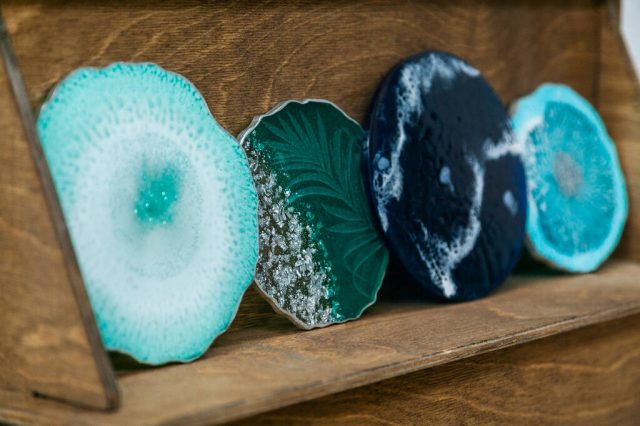
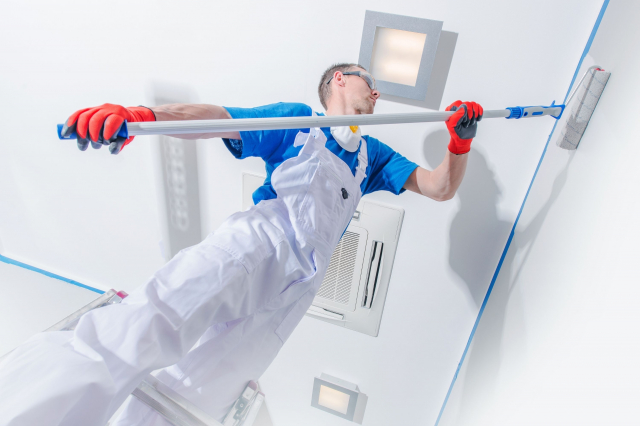
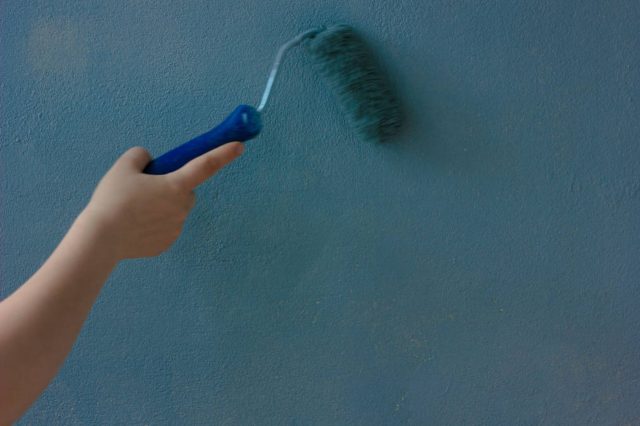
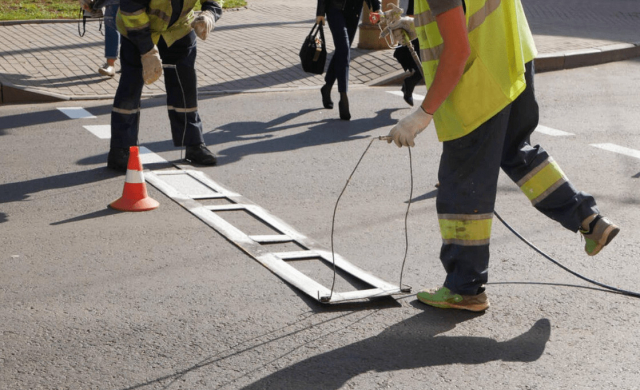
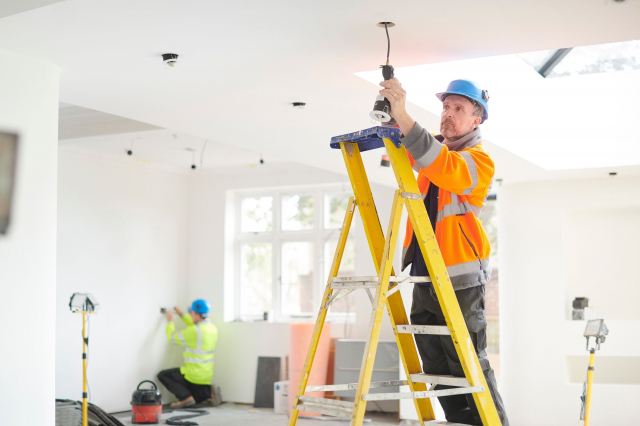

Hello! Thank you for such a useful article! Could you please recommend any good hardwood floor revitalizer?
Well, there are plenty of them in fact! Weiman Hardwood Floor Polish, Bona Hardwood Floor Polish, Quick Shine Hardwood Floor Polish, Rejuvenate Hardwood Floor Polish, Restore-A-Floor Hardwood Floor Polish, Howard Products Hardwood Floor Polish, and more.
Hello! Thank you for such a useful article! Could you please recommend any good hardwood floor revitalizer?
Do you guys know how to make wood floors shine naturally? I mean, without any chemicals, refinishing, and other stuff like that?
I’d recommend you try a combination of olive oil, hot water, and lemon juice. It will remove stains from floors while also living them shiny. Combine 1/4 cup olive oil with 1/3 cup white vinegar and five cups of hot water. Add a few teaspoons of lemon juice (or lemon essential oil) to add a fresh citrus scent.
Does anyone know how to fix dull spots on hardwood floors effectively and quickly? If you know any homemade DIY solutions for that, it would be just perfect!
Well, you need to start with removing the debris and sanding the floor. Sanding allows to smoothen it so it’s a mandatory step. Then, apply the wood stain and wood sealant. It’s going to take you quite a lot of effort but your floor will be shining!
Hi! I need your help or advice, or both! How to make dull hardwood floors shine again? I’ve run out of ideas already!
Hello! have you tried vegetable oil & white vinegar? To me, it’s the best solution ever! Mix equal parts vegetable oil and white vinegar together, and wash your floors with it. Vinegar is a natural polish that is perfect for cleaning. Besides, it will help break down dirt and grime.
If my wooden floor is painted, how do I hydrate it? I hotice that paint on some planks started chipping and peeling off.
I’d say you should remove the paint, sand the floor maybe, and then hydrate it. But I’m prety sure that it’s best to be done by a professional!
Hi everyone! I need your help folks. See, we have recently bought a house that has wooden floors. But those floors are decades old! Almost antique. And they’re extremely dry! Quite many planks are cracked, etc. How could I hydrate those?
Hello! It sounds like you need a professional to replace those damaged planks. As a wooden floor owner, I can tell you that you can’t restore wooden floor if it is that damaged. Only after the damaged planks are changed to new ones, can you sart hydrating the floor.
Hi! Do you guys know whether it’s allowed to use a wire brush on laminate? I need to scrape an old paint somehow, but the only scraping tool I have is my wire brush. Won’t it scratch the floor? Thanks!